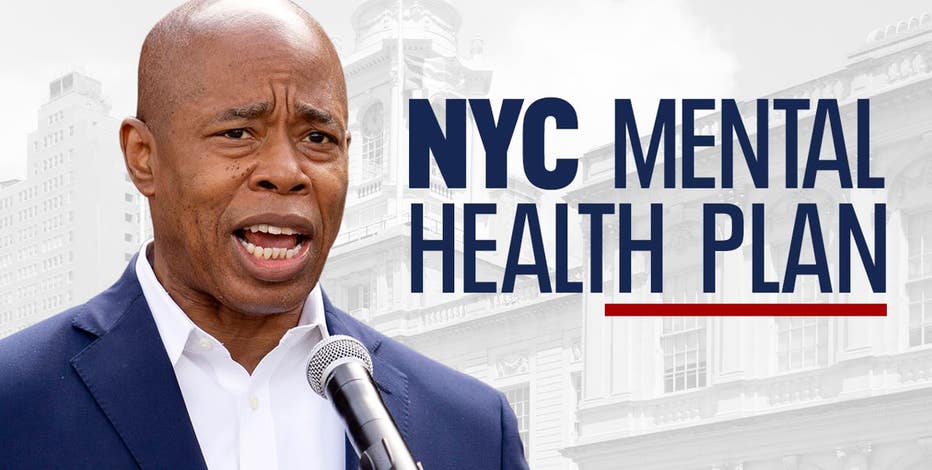NYC Mayor Adams: Controversial homeless mental health initiative shows positive results

Adams: Controversial mental health plan is working
One year ago today, New York City Mayor Eric Adams announced a plan to take people with mental illness off of the city's streets. His plan to involuntarily hospitalize them drew major criticism. FOX 5 NY's Morgan MKay looks at how the plan is working one year later.
NEW YORK - A year after New York City Mayor Eric Adams launched his controversial plan to involuntarily hospitalize homeless New Yorkers with severe mental illness, his administration is touting the program's progress.
"In this last year, we have made unprecedented progress with our most seriously mentally and street homeless folks," Scott Auwarter, assistant executive director at BronxWorks, insisted at a press conference.
Featured
Judge won't stop NYC mayor's forced hospitalization plan, for now
A federal judge will not immediately halt New York City's plans to force mentally ill people from the streets and into treatment while he fully examines the issue and makes a final ruling in the coming weeks.
The city keeps track of the top 100 hardest-to-reach New Yorkers who consistently refuse services and live on the subways and streets. Out of those 100, the city said it has now helped move 54 of the people into supportive housing units or hospital beds, according to data released Wednesday.
The list, at one time, included Jordan Neely, the 30-year-old man who was killed in a chokehold while riding the subway last spring.
"That was a real textbook case of how if you ignore the problem over and over and over again, it could turn out to be a tragic outcome," Adams said. "And our goal is to catch the Jordans at the beginning of the process. Give them the wraparound services they deserve."
However, according to the new data, the city has been involuntarily removing around 130 people from the subways and streets every week.
Featured
Mayor Adams discusses controversial new approach to NYC homeless
Mayor Eric Adams joined Good Day New York to discuss his controversial new policy to start forcing homeless people who are determined to be suffering a "mental health crisis" off the streets and out of the subway system.
But where the people go from there is unclear. The city has not been keeping track of whether these people later return to the streets.
A city hall spokesperson said they are now making an effort to track homeless individuals, but they need more funding from the state.
Stephen Eide, a fellow at the Manhattan Institute, said the data is also important in ensuring that the city can get the resources it needs.
"The city needs the state to pass certain laws. It needs more hospital beds if we're going to get anywhere in the way that ordinary New Yorkers really noticed a difference on the streets," Eide said.
The city is also pushing for state legislation to allow for licensed therapists to be deployed as mobile crisis clinicians with removal authority.
"Right now, the current law makes it impossible for us to deploy the number of clinicians needed," Deputy Mayor Anne Williams-Isom said. "The Supportive Intervention Act would allow us to deploy licensed mental health counselors, thereby enabling a bigger workforce to help engage more and more people in need."
Also, up until now, the city has never really tracked how many people have been involuntarily removed from the subways and streets, but a recently passed City Council bill will require the city to submit a list of how many people have been involuntarily removed annually.
The first list is not due until Jan. 2025.



